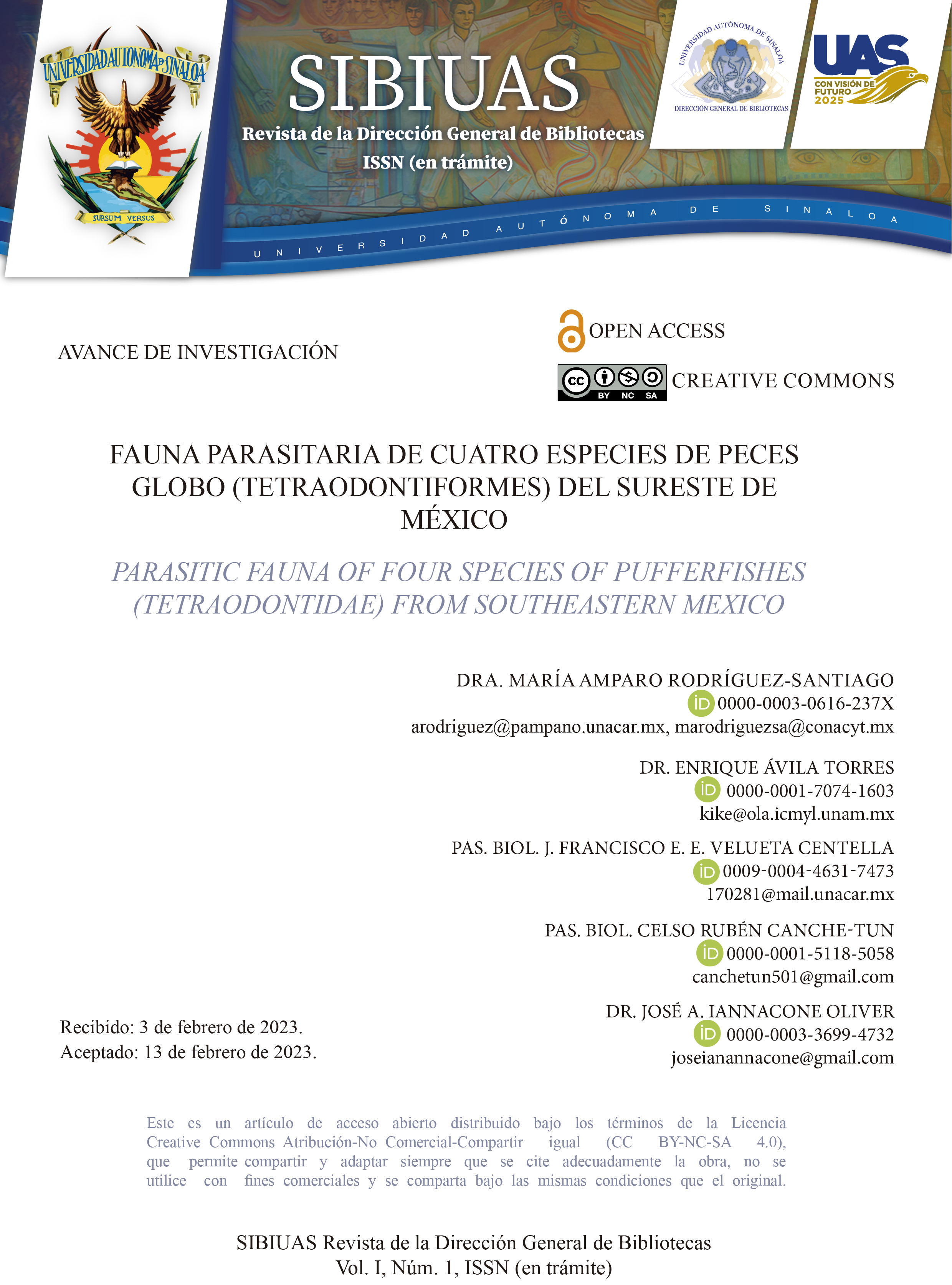Parasitic fauna of four species of pufferfishes (Tetraodontidae) from southeastern México
Keywords:
Parásitos, DiversidadAbstract
In southeastern Mexico, the Xpu, Sphoeroides testudineus, is a puffer fish that, despite its food potential, has not yet been commercially exploited. Likewise, other pufferfishes such as Chilomycterus schoepfii, Diodon holocanthus or Sphoeroides spengleri, are used in some regions as ornamental fishes or to make them into handicrafts. In this study we characterized the diversity of parasites affecting these fishes of the order Tetraodontiformes, which, although they currently have no commercial value in southeastern Mexico, are intended to contribute to the knowledge of the diversity of their parasitic fauna. Samples of these fish were obtained from localities in the southern Gulf of Mexico (Laguna de Términos, Campeche) and the Mexican Caribbean (Holbox Island and Cabo Catoche). A total of 458 parasites, three digeneans (Xystretrum solidum, Stephanostomum sp. and Lecithasteridae sp.), two nematodes (Hysterothylacium sp., and Cucullanus sp.), one monogenean (Heterobothrium lamotei), two cestodes (Tetraphyllidea sp., Trypanorhyncha sp.) and three parasitic crustaceans (Argulus flavescens, Naobranchia lizae and Rocinela signata). The most parasitized organs were the stomach, intestine, mesentery, and skin. The group of parasites that represented the highest prevalence with 70% (Stephanostomum sp.) and Trypanorhyncha sp. with the highest abundance (1.46 ± 2.00 parasites/host). For the parasites found, Laguna de Términos, Holbox Island and Cabo Catoche are reported as new geographical localities and C. schoepfii, D. holocanthus, S. spengleri as new hosts. From a parasitological point of view, the consumption of these fishes could be carried out, as long as the separation of the organs is done carefully, as it happens with another of their congeners in the Mexican Pacific (S. annulatus).
Downloads

Downloads
Published
Issue
Section
Categories
License
Copyright (c) 2023 SIBIUAS Revista de la Dirección General de Bibliotecas

This work is licensed under a Creative Commons Attribution-NoDerivatives 4.0 International License.

